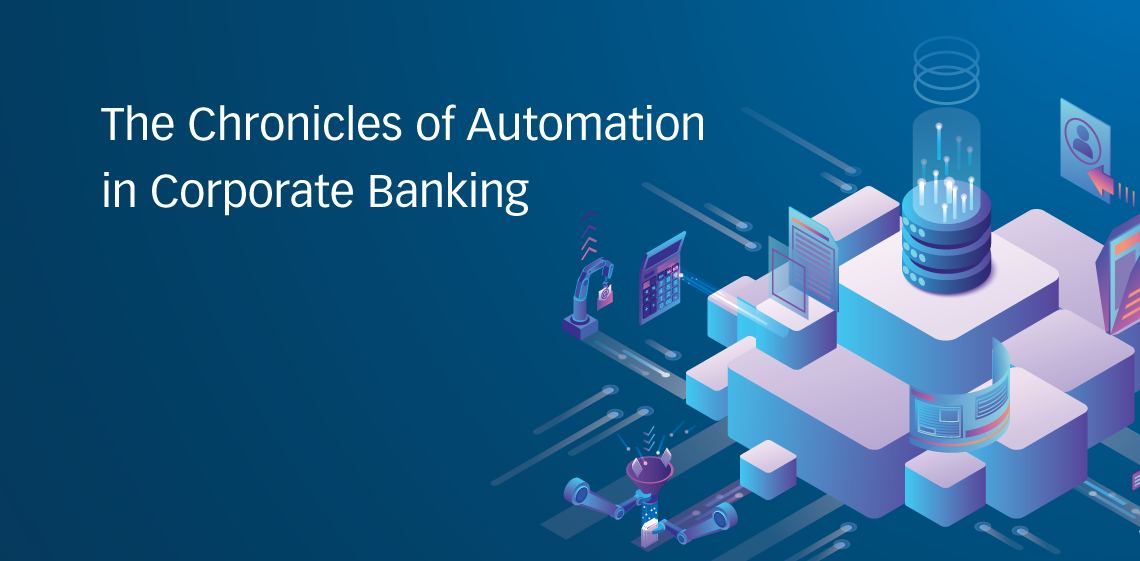

Among the main strategy pillars of banks are the reduction of costs, increase of profits and maintenance of a competitive market share. One way to achieve these strategy pillars is the automation of banking services. Although automation requires a substantial investment at the beginning, it is a long-term solution for reducing operational overhead and human capital costs, and if done efficiently, it will enhance customer satisfaction, attract new customers, and retain existing ones.
These services include but are not limited to, corporate banking and retail banking, and while the automation of the former is more complicated and expensive than the latter, it is also the most profitable. Here is what you need to know about the history and progress of automating corporate and retail banking services:
What are banking products?
Banking products usually start with an application submitted by a customer requesting an advertised product. This application comprises of data fields that are connected with back-end systems to produce the financial outcome and ledger entries constituting the bank’s balance sheet.
The application is submitted to the bank’s front-office for revision and editing by the customer service employee while the customer is present before being submitted for approval. If approved by the person or committee in line with the bank’s policies and procedures, the transaction is processed in the bank’s back-office and the result is executed on the customer account. Finally, a follow up is also done by the bank’s back-office to ensure that the transaction is concluded in line with the bank’s policies, procedures and liquidity and risk strategies.
The history of retail products
Retail products are structured products with general application rules for mass consumers. The automation of retail products by the bank requires automating the applications and workflows of each product. As banks started automating retail products, automated credit scoring systems were introduced to add further sophistication to the automation process.
Ultimately, this resulted in massive benefits for banks including reduced manual work and its underlying overhead costs, increased customer base and volume of customers and products in the market, and enhanced profits. In addition, automated reports and alert systems helped banks decrease default rates and the loss resulting from defaulting customers.
The history of corporate products
The volume of corporate customers in banks is assumed to constitute around 80% of their customer portfolio, and while they only constitute around 20% of the entire customer base, which is much lower than the number of retail customers, 80% of the revenues are, in fact, from corporates.
The risks imposed by corporate customers are much higher than retail customers, and the loss of a default of one corporate customer may be equivalent to the loss of thousands of retail customers. These facts make automating corporate products immensely more difficult than automating retail products.
Corporates are disbursed across various sectors such as industrial, agricultural, etc. and each sector has its own needs, specifications, input data and output data. Accordingly, automating a corporate product was close to impossible, and even if the bank automated a corporate product for a specific sector, it will not be able to satisfy all the corporates within that sector.
Automating corporate banking transactions
With several obstacles to automate corporate products, banks started cooperating with IT vendors, communication companies, network providers and international technology tools to automate corporate transactions, rather than corporate products. Unlike the retail sector, close collaboration and cooperation are highly needed between multiple parties to achieve automation success.
This was when straight-through processing payment solutions were introduced to allow corporates to electronically execute payment instructions from their premises, whether they are account-to-account, local, or cross-border payments. These instructions are automatically processed through the corporate’s bank for accounting purposes and then through the SWIFT network to be automatically transmitted to the beneficiary and paying bank, with less time and cost involved that benefits all parties involved. Examples of automated corporate transactions include:
Cross-border payments
The SWIFT network makes available an access point for corporates to process their payments directly through a Bank Identifier Code (BIC) and Global Payment Initiative (GPI) which facilitate payments automation with enhanced tracking services and transparency for both banks and corporates.
Salaries
Corporates can today process paying their employees’ salaries directly to their accounts instantaneously, transparently and wherever they may be, without the need for paperwork, reconciliation efforts, or time-consuming procedures.
Checks
Corporate checks can now be automated, from check issuance to check encashing, with the ability of the beneficiary corporate to even deposit checks from the convenience of their premises.
Treasury and Cash Management
Corporates can now execute their communication and financial dealings from their premises.
Trade Finance
Given the intricate workflow and high number of parties involved including importing and exporting corporates, issuing and advising banks, insurance companies, shipping companies, custom departments and more, the automation of trade finance is one of the more complicated functions to be automated for corporates. While paperwork related to letters of credit have been automated, the presentation of documents and shipping is still paper based, with many automation trials based on blockchain open ledgers under scrutiny that have yet to address the challenge of getting all parties involved on board.
Innovative solutions for automating corporate transactions will continue to rise and become more sophisticated, and solution vendors have a key role to play in analyzing, studying and accelerating the shift from paper based corporate banking to fully automated and digital forms that satisfy all parties involved, especially with the strike of a global pandemic.






